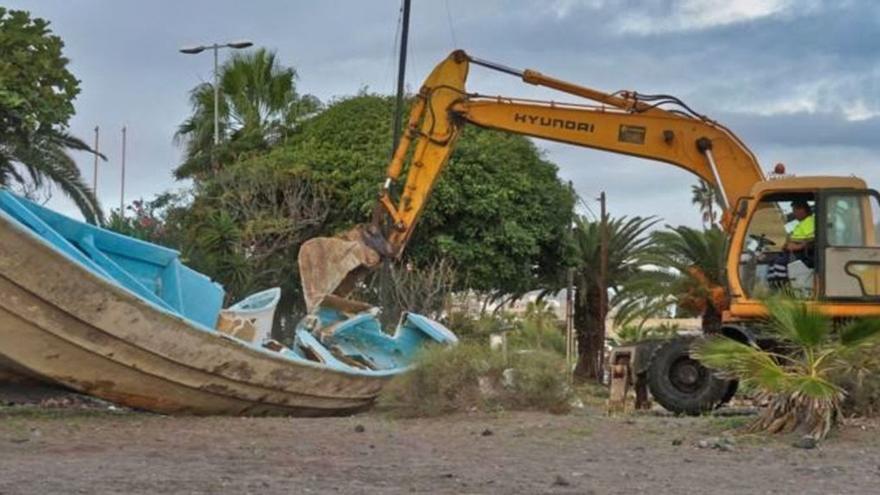
The destruction of barges used by migrants to make the crossing from the coasts of Africa to Canary Islands has become a headache for some municipalities on the Islands. It happened in El Pinar, on the island of El Hierro, and now it is happening in Arona, in Tenerife. It has taken the aronero City Council ten months to obtain judicial permission that has allowed it to remove two canoes of Las Galletas beach and proceed to its destruction.
Convoluted legislation is behind this problem. If a barge touches land without having first been detected by surveillance systems, the municipality that corresponds to the area where the migrants have arrived must take charge of the boat. The problem is that since it is evidence of a judicial investigation, the corresponding city council has to wait to receive permission from the judicial authority to be able to proceed with its elimination. Meanwhile, cayucos or boats must remain for months at the point where they arrived, which are sometimes beaches that receive many tourists.
This is what has happened in Arona. The two canoes landed in Las Galletas, a tourist area, in the first half of last year, one in March and another in May. The legal competence for the management of a vessel that has become waste corresponds to the municipality of Arona. The municipal government then began legal proceedings for the destruction and disposal of these two canoes. Once the court issued the order, this Monday morning it proceeded to demolish the two boats under the supervision of law enforcement agents. Local police.
The barges that make landfall are the responsibility of the municipalities, which assume the costs
The expenses were assumed by the Aronero City Council through the municipal cleaning services. An excavator dismantled the boats on the same Las Galletas beach where they arrived and the remains were transported in a truck to the Tenerife Environmental Complex, located in the municipality of Arico, also in the south of the Island. Fátima Lemes, mayor of Arona (PP), clarified about the long time that elapsed between the arrival of the canoes and their destruction, that “since it was judicial evidence that could not be removed or destroyed, what we did was move it to one side of the beach to avoid inconvenience to bathers.” and users of Las Galletas.
“The destruction of these canoes is one of the essential steps to get rid of this evidence, which also represents a not very pleasant sight and a reminder of the unfortunate fact that immigrants who arrive irregularly are suffering,” said Lemes, who added: “Therefore, it was an important objective that has been achieved and we hope that we do not have to carry out this task on more occasions.”
The same does not happen with the pateras and cayucos that are located on the high seas, which are the majority. In this case, the legislation establishes that it is the State that has to be done
charge of boat management. In Tenerife, these boats are taken to the Port of Los Cristianos, also in Arona, and from there, as they accumulate, they are moved to the Port of Granadilla, where they are destroyed. Lemes clarifies that his first concern “is always the people, the state in which these immigrants find themselves upon their arrival, both at the Port of Los Cristianos – for the most part – and at other points such as Las Galletas.”
Arona has the advantage of having the resources to be an important municipality that serves one of the most populated municipalities on the Island (85,249 residents, according to the latest Municipal Register). This is not the case with others that face similar situations, such as El Pinar (1,009 inhabitants), in El Hierro, which has been suffering strong migratory pressure in recent months. In November, the central government began removing the canoes that had accumulated in the Port of La Restinga months after the City Council denounced the accumulation of barges. The Ministry of Immigration awarded the Tragsa company this task out of urgency.
















